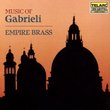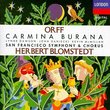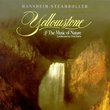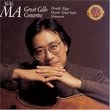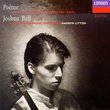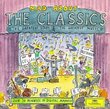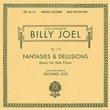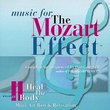| All Artists: Nikolai Rimsky-Korsakov, Kurt Masur, New York Philharmonic Title: Rimsky-Korsakov: Scheherazade; Capriccio Espagnol; Flight of the Bumblebee Members Wishing: 0 Total Copies: 0 Label: Teldec Release Date: 10/19/1999 Genre: Classical Styles: Opera & Classical Vocal, Historical Periods, Romantic (c.1820-1910), Symphonies Number of Discs: 1 SwapaCD Credits: 1 UPC: 706301712528 |
Search - Nikolai Rimsky-Korsakov, Kurt Masur, New York Philharmonic :: Rimsky-Korsakov: Scheherazade; Capriccio Espagnol; Flight of the Bumblebee
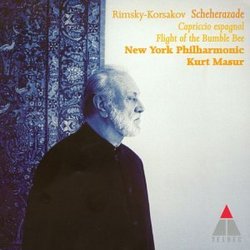 | Nikolai Rimsky-Korsakov, Kurt Masur, New York Philharmonic Rimsky-Korsakov: Scheherazade; Capriccio Espagnol; Flight of the Bumblebee Genre: Classical
|
Larger Image |
CD DetailsSimilarly Requested CDs
|
CD ReviewsThe best Scheherazade next to Beecham's Hermes Camacho | Boulder, CO | 08/23/2001 (4 out of 5 stars) "Kurt Masur has really done it this time. There is just so much excitement in this work, with relatively little deviation from the score. This is, by far, one of the best recordings of this work I have ever heard and there is NO QUESTION that this recording out performs previous NY Phil recordings, most notably that of Bernstein's, which is very virtuosic in it's performance, but is so full of unneccessary (and unwanted) nuances in tempo and rhythmic drive that it totally ruins the piece. Masur's tempos are very tasteful neither too fast nor too slow in sections. The brass is very clear and powerful, the winds technically brilliant, and the strings simply amazing. The second movement is very nice and the luster, power, and finesse he gives to unison strings/tutti statement of the theme toward the end of the piece is the best I have ever heard from an orchestra. The fourth movement is done very well, with only a few minor blunders (i.e. the opening, some crescendos could be bigger, and Masur added a brass part that was not in the score, again in the opening). The "moment", I think, with any Scheherazade performance is a very quiet passage about five minutes into the piece, where the oboe and clarinet sing the melody together with rhythimic drive in the horns, tambourine, and violas, and a playful obbligato in the violis -- here Masur captures it better than anyone I've ever heard. The Flight of the Bumblebee is very brilliantly played, the strings together like no other recording.The Cappricio Espanol is passionate and eclectic in this performance, better than many other recordings I've heard of this piece. The solos are spectacular and the luster and color given in this performance is a Philharmonic trademark.A perfect performance technically, lacking only every once in a while in artistic brilliance (i.e. pianos could have been more, crescendos bigger, ritards broader, etc.), this is a very good recording that every Scheherazade lover should have. Compare it to other recordings with Karajan, Bernstein, Ormandy, or Reiner, and you'll see the superiority in this performance." Russian Exoticism Brett A. Kniess | Madison, WI | 01/27/2006 (5 out of 5 stars) "The Mogachaya Kuchka, or the Mighty Handful, were a group of Russian composers dedicated to raising the National music of Russia to greater heights. Rimsky-Korsakov was one of the five, and his music always has a "Russian" sound, sometimes even an "Asian" quality. This CD features three famous Rimsky-Korsakov works evocative of his nationalist sound: Scheherazade, Capriccio Espagnole, and the Flight of the Bumblebee. Scheherazade is the guileful new wife of a King who has killed his previous wives after their first night together, the classic tale of 1001 Arabian Nights; Scheherazade tells her husband a new story every night, but leaving a cliff-hanger at bedtime, to keep herself alive. The work, Scheherazade, is four portraits: 1. The Sea and Sinbad's Ship, 2. Kalandar the Prince, 3. Young Prince and Princess, and 4. Festival in Baghdad. The main theme is stated in the opening of movement one in unison brass and strings; the storyteller is played by a solo violin, a Romantic Russian sounding theme that reappears in each of the four portraits. The crux of the first movement is a rough sea evoked by a falling melody that seems slightly troubled, but also quite unforgiving. Solos abound, including violin and cello, who have some sensual lines. The second movement is a folk dance in 3, that picks up as it goes. Great quick moving solos, featuring woodwind stops and starts of the exciting dance; the mood however is generally melancholy, but the opening melody brings the movement to a rousing close. The third movement is comprised of two dances: the first, a lush romantic, somewhat courtly dance of love, the second has a military undertone, with percussion marching along underneath. The movement is highlighted with virtuosic flourishes on the woodwinds and strings, and an almost middle-Eastern mode in the melody. The final movement is the showpiece of the work, bringing back many of the themes heard earlier. One new theme, is an exciting, almost menacing, galloping motive with raging brass. The storyteller returns to conclude the story; an epic work. The music is very colorful, as is often the case with Rimsky-Korsakov; he often employs Russian and other exotic modes. It is a very Romantic sound full of lush chords, heavy in strings and woodwinds, with virtuosic solo elements. The orchestrations and melodies are interesting and the subject is greatly portrayed. Scheherazade is coupled with two other colorful works, the famous Flight of the Bumblebee shows the New York Philharmonic can take virtuosic writing in stride. The Capriccio Espagnole is, outside of the charming second movement, a work of pure Spanish (and incidentally) Russian revelry. In five movements (Alborada, Variazione, Alborada II, Gypsy Song, and Fandango) each give a colorful view of a Spanish dance. Each features great solos for violin virtuoso(here played by concertmaster Glen Dichterow); vivid orchestrations, burly and charming melodies, all with a sassy Spanish flavor. Fun music. Kurt Masur is not known for electric performances, but this live recording of Masur conducting the New York Philharmonic is pretty good. There are so many virtuoso solo sections required, there is no other ensemble I could think to want play these works; and the excitement of a live performance catches the ensemble at a high point. The recording quality is pretty good (only two coughs from the live setting), but I especially like the dry "bite" the orchestra gets from the hall, and the forceful approach to Capriccio Espagnole simmers. For an introduction to the famous works of Rimsky-Korsakov, this is a great place to start." A good performance, but there's better copies out there. Christopher Losee | New Paltz, NY (USA) | 04/16/2000 (4 out of 5 stars) "This copy of Scheherazade is technically perfect, which is a trait of the current New York Philharmonic. However, I think that the low brass could have been louder (especially during the important tuba part in the first movement). Movements 2 and 3 were really good, but there is some random coughing during crucial sections of these movements. The last movement was too slow during the fast sections and too fast during the slow sections (like the ending). However, Masur delivers the BEST Capriccio Espagnol I have ever heard. Movement 2 was lovely, and the solos were outstanding in movement 4. This copy has great sound quality, but it also muffles the low brass in Scheherazade. For a great Scheherazade, get the copy with Leonard Bernstein directing the New York Philharmonic. It's not perfect technically, but it has got it where it counts."
|

 Track Listings (10) - Disc #1
Track Listings (10) - Disc #1